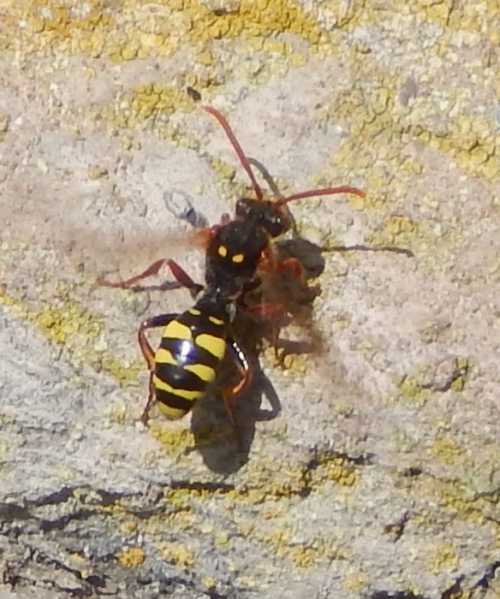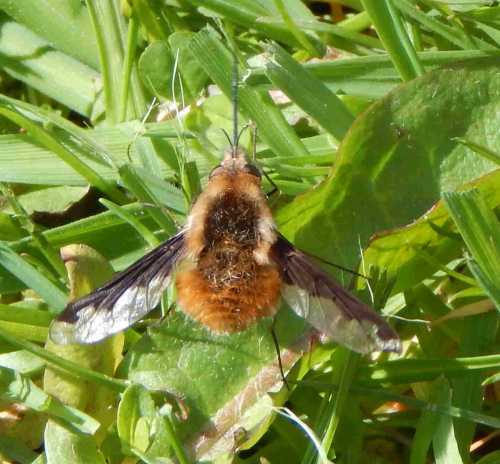Gooden's Nomad Bee - Nomada goodeniana
Updated: 22nd February 2021
Gooden's nomad bee - Nomada goodeniana - like all nomad bees are cleptoparasites - seemingly of Andrena (mining) bee species.
As a cleptoparasite, these bees locate potential host nests, and wait a little while outside the nest, before exploring further.
About The Gooden's Nomad Bee
Assuming the nest is suitable, the Gooden's nomad bee enters the host's nest burrow, and lays an egg concealed in the wall of an unsealed nest cell.
The host bee will have begun the process of laying her egg and providing the necessary food stores (pollen), before sealing up the individual cell.
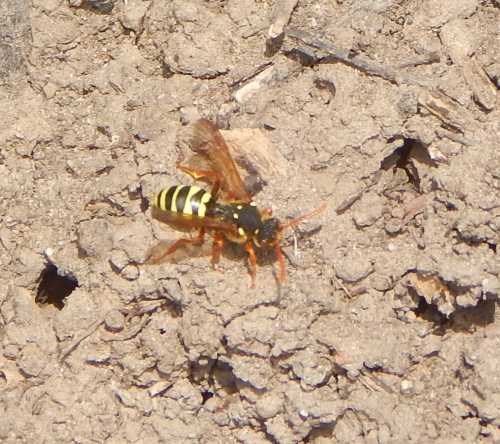 Like all Nomada species, the Gooden's nomad bee can bee found in the habitat of its target host.
Like all Nomada species, the Gooden's nomad bee can bee found in the habitat of its target host.Once the grub of the Nomada bee emerges, it gobbles up the provision of food left for the larva of the host species, then proceeds to destroy the host grub. It has large mandibles (jaws) for this task.
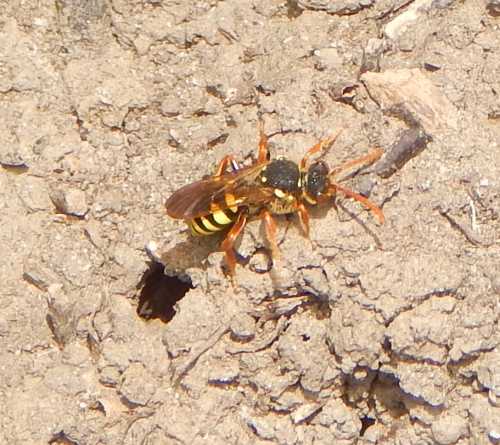 Gooden's nomad bee - Nomada goodeniana female - leaving the entrance of a host nest.
Gooden's nomad bee - Nomada goodeniana female - leaving the entrance of a host nest.
Foraging habits of Nomada goodeniana
I took many photographs of Gooden's nomad bee foraging - including on dandelions and many other wildflowers. Only one photograph was of sufficient quality to publish!
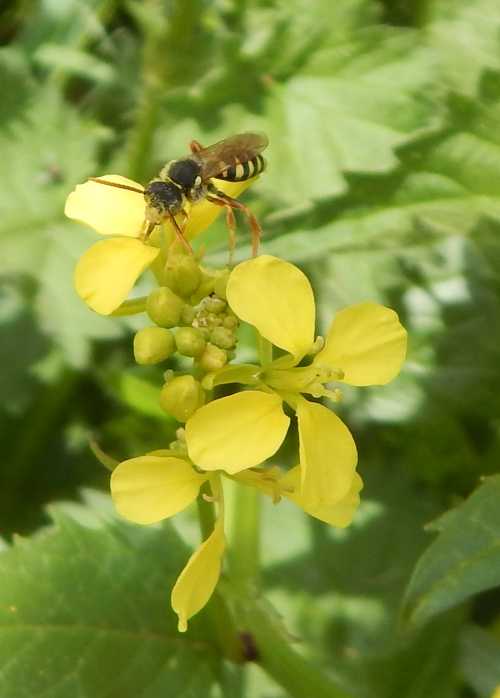 Gooden's nomad bee - Nomada goodeniana foraging on rape flower.
Gooden's nomad bee - Nomada goodeniana foraging on rape flower.
However, suffice to say that these bees are known to favour dandelions, rape flowers, Greater Stitchwort, cow parsley, buttercups and forget-me-knots among others.
Habitat: where can Gooden's nomad bee - Nomada goodeniana be found?
In this particular location, there were plenty of wildflower, hedgerow and trees that would serve potential host species as well as Nomada goodeniana.
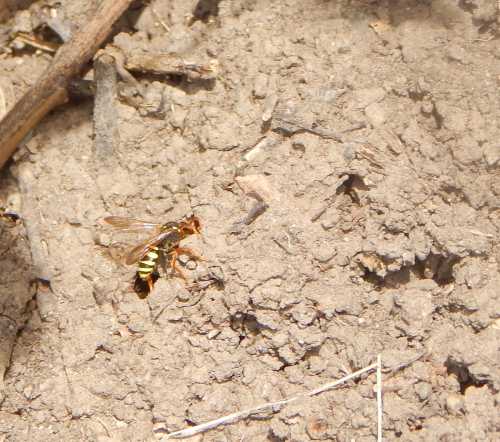 Nomad bees (Nomada) are cleptoparasites. They lay their eggs in the nests of the host species. The emerging Nomada grubs destroy the host's larvae and eggs.
Nomad bees (Nomada) are cleptoparasites. They lay their eggs in the nests of the host species. The emerging Nomada grubs destroy the host's larvae and eggs.As with all cleptoparasites, the key factor for these species is that they can be found in the same habitats as their preferred hosts, upon whom they depend for survival.
Thus, when I see Nomada in a location, I automatically look for suitable nest sites for the host species - often small holes (burrows), sometimes around bare earth or cavities.
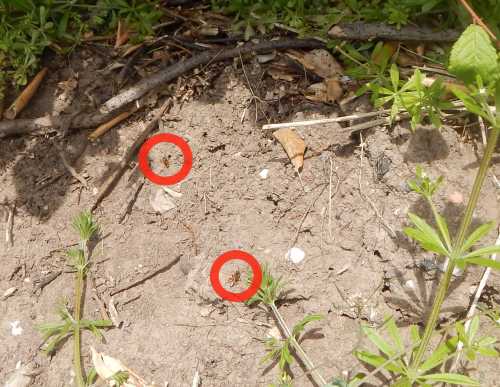 2 Nomad bees lurking around potential host burrows.
2 Nomad bees lurking around potential host burrows.On this occasion, I quickly located the nest site: a dry patch of earth on an otherwise grass and wildflower-filled sunny bank. Here, I found a loose aggregation of small holes in the ground, and with Gooden's nomad bee flying and lurking around.
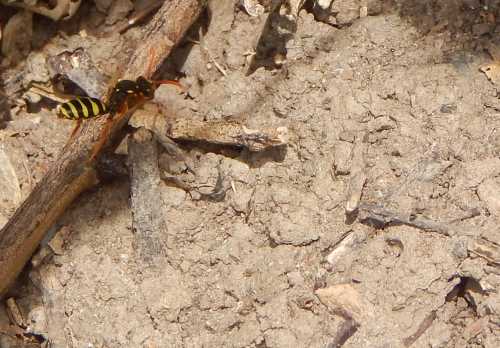 Gooden's nomad bee - Nomada goodeniana in flight.
Gooden's nomad bee - Nomada goodeniana in flight.
Most of the nest burrows were already sealed, but some remained open. The open nest burrows were potential targets for Gooden's nomad bee.
As you can see from the photograph below, the entrance of a nest burrow to the left of the nomad bee remains open, whereas the entrances to three other nest burrows visible on the photograph, have already been sealed.
Target host species
The species I saw close by was Andrena nigroaenea - the Buffish mining bee.
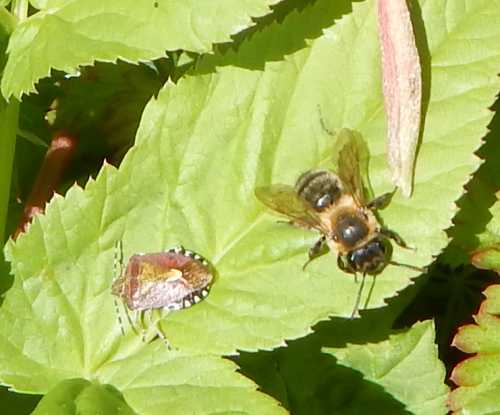 Andrena nigroaenea - the Buffish mining bee (female) sitting on a leaf next to a shield bug.
Andrena nigroaenea - the Buffish mining bee (female) sitting on a leaf next to a shield bug. Andrena nigroaenea - the Buffish mining bee (male) - was also foraging near by.
Andrena nigroaenea - the Buffish mining bee (male) - was also foraging near by.
However. other known hosts include the grey-patched mining bee Andrena nitida.
Andrena thoracica and the chocolate mining bee, Andrena scotica nests may also be targeted.
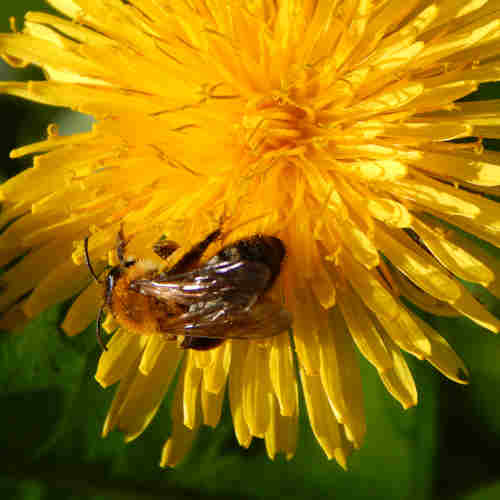 Grey-patched mining bee -Andrena nitida - a potential host of Gooden's nomad bee.
Grey-patched mining bee -Andrena nitida - a potential host of Gooden's nomad bee.I know that some people find the idea of cleptoparasitic bees unpleasant, however, the presence of the cleptoparasite should hopefully signal the healthy population of the host species.
If you found this page helpful or interesting, I'd really be grateful if you would share it with others - if not this page, perhaps another, such as Gardening For Bees.
Thank you so much :) .
